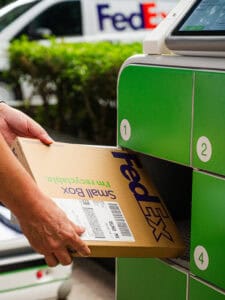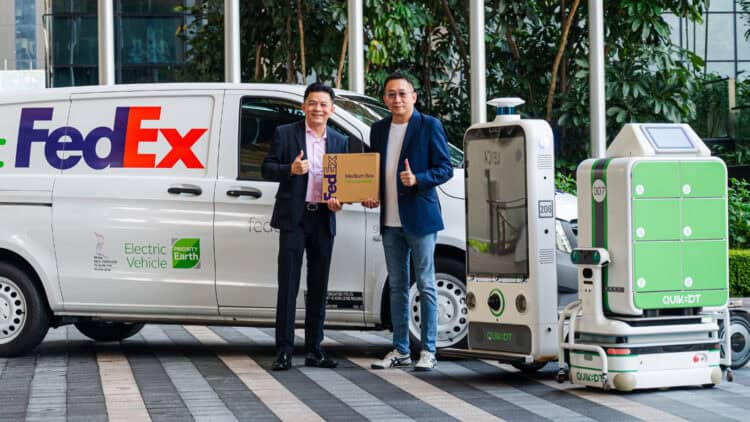Singapore's urban density presents unique challenges for last-mile delivery, including traffic congestion and limited parking. Autonomous delivery systems can help mitigate these issues.
"Last-mile logistics is one of the most expensive and inefficient segments in the supply chain," noted Alan Ng, founder and CEO of Singapore-based QuikBot Technologies.
Corroborating the obsevation, FedEx Singapore's managing director Eric Tan added: “Delivering in dense urban environments like Singapore requires fresh perspectives and cutting-edge technology."
Federal Express Corporation (FedEx) has piloted the use of autonomous delivery robots at selected commercial buildings in Singapore. This will see delivery robots autonomously making floor-to-floor, last-mile commercial deliveries.
South Beach Tower and Mapletree Business City were the sites for the pilot test during which FedEx worked with Singapore-based QuikBot to fulfil the last mile delivery at both locations.
Workflow: FedEx couriers drop off multiple parcels at QuikBot's Forward Fulfilment Depot within each building cluster. QuikBot staff then verify and load the parcels into secured QuikBoxes. QuikBot’s autonomous mobile robots retrieve the parcels, navigate lifts to individual floors to complete secure, contactless deliveries with no further human assistance.
This automation streamlines courier operations by minimising downtime and maximising agility. By eliminating wait times at lift lobbies and security checkpoints, couriers can swiftly move on to their next destination, prioritising time-sensitive deliveries with ease.
“Our collaboration with QuikBot embodies FedEx’s commitment to revolutionising urban logistics through automation and data-driven insights," said FedEx's Tan. "It is empowering us to scale efficiently and build a more agile, sustainable and future-ready network that exceeds customer expectations."
This initiative is part of FedEx’s efforts to revolutionise last-mile delivery in Singapore. By integrating autonomous in-building deliveries, FedEx is streamlining operations in high-rise commercial hubs and advancing its vision of making supply chains smarter.
Why robots?
Robots can now be found in malls and hotels doing rounds of floor sweeping or making deliveries in restaurants. Delivering parcels is the next iteration of their capability.
However, current technologies and workflows have yet to favour machine delivery over more nimble deliveries by humans. A spokesperson for Quikbot noted that some commercial buildings in the city only allow one visitor pass per floor - suggesting that a courier agent will need to return to the building front desk to get a pass for each delivery.
"QuikBots are integrated directly with building facility systems, including lift controls. This allows them to move autonomously between floors without having to start from the lobby again for each delivery," he explained.

In Singapore, deliveries are typically grouped by building clusters. One FedEx agent or driver is usually assigned to a specific cluster. A good example is Mapletree Business City, which can consist of 4 to 5 blocks.
With QuikBot, the agent simply drops the parcels at a Forward Fulfilment Depot within the cluster. From there, QuikBot handles the building-to-building floor-by-floor distribution autonomously, allowing the driver to proceed immediately to the next delivery zone.
Fair enough!



